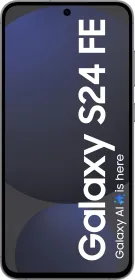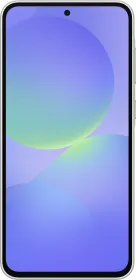The Samsung Galaxy A56 was launched in India alongside the Galaxy A36, aiming to democratize AI under what Samsung calls “Awesome Intelligence.” Once exclusive to Galaxy S and Foldables, AI features are now reaching mid-range smartphones — a significant move in 2025.
With a slimmer, lighter design and promises of 6 years of Android updates, the Samsung Galaxy A56 is positioning itself as one of the best mid-range smartphones with software updates in India in 2025.
This raises important questions: Will the Galaxy A56’s hardware be capable of delivering good performance over the long term? Is it good for gaming? Is it waterproof? And does it offer true value for its price? Let’s dive into this Samsung Galaxy A56 long-term review to find answers.
Samsung Galaxy A56 Price & Availability
The Samsung Galaxy A56 comes in Pink, Olive, Graphite, and Light Gray colors. It’s available on Samsung’s official e-store and all leading online and offline retail stores. The Galaxy A56 is available in the following RAM and storage options.
- 8GB + 128GB: ₹38,999
- 8GB + 256Gb: ₹41,999
- 12GB + 256GB: ₹44,999
Pros
- Guaranteed 6 years of Android OS and security updates
- Vivid 120Hz AMOLED panel
- Durable build quality
- Refined, user-friendly One UI 6.1
- IP67 waterproof rating + Gorilla Glass Victus+
Cons
- Slower charging compared to rivals
- No telephoto camera
- Not ideal for gaming or heavy workloads
Samsung Galaxy A56 Review: Design and Build

If you’ve seen last year’s Galaxy A55, you’ve essentially seen the Galaxy A56. Samsung’s mid-range design playbook hasn’t changed much — and honestly, that’s not a bad thing. But this year, there’s a subtle yet noticeable shift in how the rear cameras are treated. Instead of the familiar trio of floating rings, the Galaxy A56 5G introduces what Samsung calls a “Grouped Linear Floating Camera Island.” In plain English, it’s a sleek, pill-shaped black module housing all three sensors in one contiguous bump.

Yes, it protrudes slightly — enough to make the phone rock a bit on a table. Chrome edging around the bump gives it a “floating” vibe, something that wouldn’t feel out of place on a flagship like the Galaxy S25. It’s likely a glued-on slab over the actual lenses, which sit recessed below.

The Samsung Galaxy A56’s flat side rails return with a brushed metal look that brings just enough texture to feel premium, even if it’s still aluminium. Those flat sides meet flat glass panels on the front and back, continuing the current “iPhone-inspired” aesthetic we’re seeing across Android’s mid-range segment. Love it or hate it, it’s trending.


Is it comfortable? Well, that depends. The sharp edges might not be for everyone, but they offer a solid in-hand grip. And despite being slightly heavier at 198g, the A56 feels well-balanced. For comparison, the OnePlus 13R tips the scale at a heftier 206g. In comparison, the Vivo V50 manages to stay the lightest at 189g.
Samsung offers the Galaxy A56 in some muted yet tasteful colours – Awesome Olive, Awesome Graphite, and Awesome Light Gray. We’ve got the Olive one in hand, and it’s surprisingly elegant. It masks fingerprints well — a small but underrated design win — thanks to the glossy finish that’s less reflective and more refined.
The build isn’t just about looks, either. Both the front and back are clad in Corning Gorilla Glass Victus+, and there’s IP67 water and dust resistance. That’s a notch above the OnePlus 13R’s IP65 rating, though it falls short of the Vivo V50’s IP68 and IP69 certifications. It’s not a deal-breaker, but it’s worth pointing out — especially since more competitors are raising the bar in this department.
Samsung Galaxy A56 Review: Display

Samsung knows how to make a good screen. That’s been true for years—and with the Samsung Galaxy A56’s Super AMOLED display, it’s still true, even if this year’s upgrades are more refinement than a major overhaul.
The panel measures 6.7 inches diagonally, stretching just a little taller than last year’s Galaxy A55 while keeping the overall footprint manageable thanks to slimmer bezels.

You’re still getting a Full HD+ resolution (1080 x 2340 pixels), HDR10+ support, and a 120Hz refresh rate, which remains split between two modes—”Standard” (capped at 60Hz) and “Adaptive” (which tries to hold 120Hz where it can). It’s a familiar setup, and for most users, that’s not a bad thing.
Samsung has also bumped up the peak brightness to 1,900 nits, which helps a lot in bright outdoor conditions. While not quite at flagship levels—or even what rivals like the OnePlus 13R or Poco F6 Pro offer—it’s a welcome jump over the A55’s 1,000 nits. Indoors, it rarely needed to be maxed out. Outdoors, it kept everything visible, from texts to YouTube thumbnails.
Colors are vibrant and punchy, which is something you expect from a Samsung AMOLED. You get two screen profiles—Vivid and Natural, with the ability to tweak the white balance manually if you’re feeling picky. And like most Samsung phones, the Eye Comfort Shield is here to reduce blue light at night, along with Dark Mode and an Always-On Display, though there’s no notification LED.


Where it does fall behind slightly is overall screen tech parity in 2025. With no DC dimming or low-brightness anti-flicker mode, it lacks some of the finer touches you’ll find in competitors at this price. That said, I didn’t notice any flicker during use, even at night.
The A56’s display is also wrapped in Corning Gorilla Glass Victus+, which adds a layer of durability that’s rare in the budget segment. A few pocket tumbles and minor drops left it unscathed, though I didn’t dare try a concrete drop test. (Let’s leave that to the YouTubers.)
Overall, the Galaxy A56 offers a fantastic screen, just not the flashiest one around, with competition flaunting quad curved panels and boasting massive PWM numbers.
Samsung Galaxy A56 Review: Fingerprint, Haptics, and Audio
The Galaxy A56’s stereo speaker setup is a familiar hybrid design: a bottom-firing main speaker paired with the earpiece pulling double duty. It’s not symmetrical, and yes, the bottom speaker does the heavy lifting. But surprisingly, this setup manages to deliver a richer, warmer audio profile than most phones in the ₹35,000 to ₹45,000 segment.

Whether you’re bringing a show, on a speakerphone call, or playing music out loud, the sound is fuller with less tinny distortion, especially at high volumes. You don’t get deep bass or spatial separation like on pricier flagships. Still, for its class, the Galaxy A56 stereo speakers are solid.
The in-display fingerprint sensor is accurate and consistent—but slow. Worse, it’s placed a little too close to the bottom edge of the screen. You’ll get used to it over time. Still, in a world of faster ultrasonic readers and better-placed scanners (looking at you, Pixel 9a), it’s one of the few pain points that reminds you this is still a mid-range device.
On the haptics front, the A56 doesn’t use the cheap, springy vibration motors we still occasionally find at this price. Haptic feedback feels clean and subtle—something you feel, not hear. It’s not quite flagship-grade in terms of intensity or nuance, but it’s well-integrated across the UI. You’ll notice it when typing, swiping, and navigating, and that’s a good thing.
Samsung Galaxy A56 Review: Software
One of the best things about buying a Samsung phone in 2025—even a mid-ranger like the Galaxy A56—is that you’re signing up for a long-term relationship. The Galaxy A56 ships with Android 15 out of the box, running Samsung’s latest skin, One UI 7, and it’s already slated to receive 6 major OS upgrades and 6 years of security patches. That’s the same commitment Samsung gives its flagships—making this phone a rare value pick in the ₹35,000 to ₹45,000 price bracket.

Samsung is doubling down on AI across its ecosystem, but on the A56, it’s not labeled “Galaxy AI.” Instead, it shows up under the more whimsical (and very Samsung) name: Awesome Intelligence. Branding quirks aside, these tools are surprisingly capable—and surprisingly fun.

The One UI 7 tucks these AI-powered tools for Galaxy A56 neatly inside the Settings and Gallery apps. You can remove objects from photos, enhance group shots, and even get smart suggestions while editing—nothing groundbreaking, but polished and useful.
A standout feature is AI Select, a more powerful evolution of Samsung’s Smart Select. It can recognize and extract text from images, turn Instagram Reels into GIFs, and even generate wallpapers from images currently on-screen. It’s clever, responsive, and genuinely useful in day-to-day use.
And yes, Google’s Circle to Search is here too—just hold the home gesture and circle anything on screen for instant answers. It works better than you think.

Samsung even brings over smarter editing tools like Custom Filters, Auto Trim for videos, and real-time translation via Bixby Vision. It doesn’t quite match the flagship Galaxy S24 series in AI flair—there’s no live call translation or full-blown generative editing—but it hits all the sweet spots for casual use.

Samsung’s One UI 7 software experience on the Galaxy A56 is not the cleanest option available at this price point.. There’s minimal some bloatware but the interface is smooth, and everything feels tightly integrated. You get dynamic lock screens, custom color palettes that sync with your wallpaper, multiple layout options for your homescreen and app drawer, and access to Samsung’s expansive Galaxy Themes store if you want to go full on customizations.

The Now Bar, previously reserved for Samsung’s flagship phones, it makes a surprise appearance here. Think of it as Samsung’s take on Apple’s Dynamic Island – a live widget bar that sits on your lock screen, surfacing currently playing media, timers, or live updates from select apps. It’s tiny, helpful, and adds a bit of flair.
Samsung Galaxy A56 Review: Performance and Benchmarks

The Galaxy A56 5G is the first Samsung phone to feature the Exynos 1580 chipset, and it shows. This new 4nm SoC brings a notable bump over last year’s Exynos 1480, with upgraded ARMv9 CPU cores and a significantly more capable GPU. On paper, it’s a clear step forward. In practice? It’s complicated.
Samsung pairs this chip with a generous 12GB of LPDDR5 RAM and 256GB of UFS 3.1 storage, of which roughly 224GB is available out of the box. Plus, you get Samsung’s RAM Plus feature that intelligently adds another 8GB of virtual memory. That’s more than enough overhead for multitasking, switching between heavy apps, and casually snapping open Instagram mid-Zoom calls.

And in typical Samsung fashion, performance is smooth. It’s not blazingly fast, not ultra responsive—just… smooth. Scrolling through social feeds? Check. Streaming 4K on YouTube? Easy. Casual gaming? Absolutely.
But if you’re wondering, “Is the Galaxy A56 good for gaming?” the answer is a cautious “Not really.” Sure, BGMI and CoD: Mobile run fine, but you’re capped at 60fps (Smooth + Extreme) settings. That’s a bit of a letdown in a world where phones like the OnePlus 13R and Realme GT 6—both in the same price range—offer Snapdragon 8 Gen 3 or 8s Gen 3 chipsets and crush benchmarks.
Let’s talk GPU. The Xclipse 540, powered by AMD’s RDNA 3 architecture, promises more muscle than before—dual Work Group Processors (WGPs), improved texture units, and more GL2 cache. On paper, it sounds promising. But in reality, it’s just… fine. 3DMark Wildlife Stress Test returned a stability score of 94.5%, with thermals rising from 32°C to 42°C—not scorching, but far from cool.





In fact, during extended gaming sessions, the Galaxy A56 heated up by nearly 30°C—a clear sign that thermal management still needs work. That’s despite Samsung’s claim of a “larger cooling solution,” though it didn’t share any specifics. Compared to the Galaxy A55 (which achieved 99.1% stability), this is a slight step back in sustained performance.
But here’s the thing: benchmarks don’t tell the whole story. Day-to-day, this phone gets the job done. It doesn’t stutter, it doesn’t crash, and it feels responsive to the everyday tasks that 90% of users care about. That alone makes the A56 a strong performer—just not for power users
Samsung Galaxy A56 Review: Cameras

Samsung has quietly loaded the A56 with AI-powered photo editing tools that go beyond filters:
- Best Face lets you swap in better facial expressions post-shot (Motion Photo must be enabled).
- Object Eraser removes photo bombers in a tap—though not as seamlessly as on the flagship Galaxy S25 series.
- Remaster subtly tweaks exposure and balance without ruining the mood of your shot.
And then there’s Instant Slow-Mo, Auto Framing, and a smart Auto Trim tool for video edits. It’s a camera suite that feels helpful, not gimmicky.
Samsung’s Galaxy A56 doesn’t come with the camera muscle of its flagship siblings. Still, for under ₹40,000, it delivers a surprisingly capable and well-rounded photography experience. In a market flooded with spec-heavy challengers, the A56 leverages Samsung’s decades of camera tuning experience to give users consistency, ease of use, and a taste of flagship polish.
On the back, the Galaxy A56 features a triple rear camera setup:
- 50MP f/1.8 primary shooter with OIS
- 12MP f/2.2 ultra-wide lens
- 5MP f/2.4 macro camera
For selfies, you get a respectable 12MP front-facing camera that handles dynamic range and skin tones with finesse.
This setup doesn’t scream “flagship killer” on paper, especially compared to the OnePlus 13R’s telephoto setup or Vivo V50’s ZEISS-enhanced optics and 50MP selfie camera. But in the real world? The Galaxy A56 gets more wins than you’d expect.


The A56’s main sensor captures crisp detail and natural-looking images, even in tricky lighting. Dynamic range is wide, shadows are rarely crushed, and colours—though slightly cooler than neutral—maintain Samsung’s signature punch.








In head-to-head shots, it often outperforms the OnePlus 13R, which tends to oversaturate and overexpose for extra pop. Where the OnePlus lifts shadows for drama, the A56 preserves subtle texture and stays true to life.
Against the Vivo V50, which is tuned in collaboration with ZEISS for bold colours and bokeh-heavy portraits, the A56 feels more restrained and true to life. Vivo’s image processing often favours brightness over accuracy, which can wash out detail—something the A56 avoids. However, in still photography, the V50 does edge out the A56 when it comes to HDR performance, especially in scenes with complex lighting and high contrast.
Despite the megapixel race, the 12MP ultrawide on the Galaxy A56 actually delivers more consistent images than the 50MP ultrawide sensor on the ZEISS-tuned Vivo V50 or the 8MP shooter on the OnePlus 13R. Yes, it’s not as detailed in a pixel-peeping sense. Still, it produces cleaner edges, fewer distortions, and a wider field of view than most of its competitors.
The OnePlus 13R’s ultrawide lens struggles with edge sharpness and tends to underexpose shadows. The Vivo V50, despite its 50MP tag and ZEISS backing, applies aggressive HDR and noise reduction, which can smudge fine textures.
Videos
It’s not on the cinematic level of a flagship iPhone or S25 series level. Still, stabilization and autofocus are impressive for this class. You can even adjust framing mid-record thanks to Samsung’s auto-tracking tools.
Compared to the Vivo V50, colours on the A56 look slightly more contrasty, and while both phones deliver solid HDR performance in video, Vivo’s portrait video looks more cinematic, particularly with subject separation. However, the A56 pulls ahead in tricky lighting, offering better low-light video and more stable exposure.
When it comes to zoom transitions, Samsung wins—zooming on the A56 feels smoother and more seamless. The V50 exhibits noticeable jitters when zooming or recording video on the move. That said, both phones struggle slightly with motion stability, especially when handheld and walking.
In low light, the A56 handles exposure shifts and artificial lights better, avoiding the overprocessing often seen on the V50. For casual content creators, the A56’s consistent autofocus and tracking tools provide a leg up.
Samsung Galaxy A56 vs Competitors: Camera Comparison Snapshot
| Phone | Main Sensor | Ultra-wide | Front Camera | Strengths |
|---|---|---|---|---|
| Galaxy A56 | 50MP (OIS) | 12MP | 12MP | Natural colours, good detail, AI tools |
| OnePlus 13R | 50MP + 50MP Telephoto | 8MP | 16MP | Detail-rich shots, vibrant tones |
| Vivo V50 | 50MP | 50MP | 50MP | Selfie king, vibrant colour science |
| Realme GT 6 | 50MP + 50MP Telephoto | 8MP | 32MP | Sharp video, good portrait zoom |
| Galaxy A36 | 50MP | 8MP | 13MP | Affordable, but lacks detail |
Samsung Galaxy A56 Review: Battery and Charging

Samsung hasn’t changed the battery formula for the Galaxy A56 5G. You’re still getting a 5,000mAh battery, just like the Galaxy A55 and A54 before it, but now paired with a more optimized version of One UI 7 and the energy-efficient Exynos 1480. In real-world use, I was getting a consistent 5 hours of screen-on time (SoT) across two days, primarily on Wi-Fi with occasional 5G use, all while keeping the display locked at a smooth 120Hz. That’s slightly lower than what I squeezed out of the Galaxy A55, but thanks to One UI 7’s background process management and thermal throttling improvements, battery endurance feels better overall.
For most users, the Galaxy A56 should easily last a full day—even with heavier tasks like gaming, camera use, and 5G browsing in the mix. Samsung continues to lag behind on charging. The Galaxy A56 supports 45W fast charging—the same spec as its predecessor—but does not include a charger in the box. Using Samsung’s official 45W PPS charger, the phone charges:
- 0 to 50% in ~20 minutes
- 0 to 100% in about 1 hour 15 minutes
It’s a noticeable improvement over the Galaxy A55’s slower top-up times, but when stacked against the competition, Samsung’s conservative approach becomes more apparent.
Review Verdict: Should You Buy the Samsung Galaxy A56?
In a market where mid-range phones are increasingly becoming spec races, the Samsung Galaxy A56 takes a different path. It doesn’t try to win benchmarks or throw in a high-end camera setup just for headlines. Instead, it doubles down on what actually matters to long-term users — software longevity, durability, and day-to-day reliability.
Yes, at ₹41,999, the Galaxy A56 doesn’t feel like the most aggressively priced option. The OnePlus 13R outpaces it in sheer performance thanks to the Snapdragon 8 Gen 3, and gamers or power users will likely lean that way. Even the Vivo V50, despite being more affordable, delivers a more stylish design and impressive selfie game.
But where the Galaxy A56 quietly pulls ahead is in the stuff that endures. You get six years of OS and security updates, a promise no other phone in this segment even attempts to match. Samsung also offers an IP67 rating and Gorilla Glass Victus+, giving the A56 a level of ruggedness usually reserved for pricier flagships. Add in Samsung’s refined One UI, dependable battery life, and a 120Hz AMOLED panel that’s perfect for content consumption, and you get a phone that doesn’t shout but lasts.
So no, the Galaxy A56 isn’t the best mid-range phone for gaming, nor does it have the flashiest camera setup. But if you’re looking for a phone that will quietly go the distance — with great software support, solid durability, and just enough AI-powered features to stay modern — this is the one to keep an eye on.

Smartprix ⭐ Rating: 7.7/10
- Design and Build: 8.1/10
- Display: 8.1/10
- Speakers: 7.8/10
- Software:8.3/10
- Haptics: 7.8/10
- Biometrics: 8.0/10
- Performance: 7.5/10
- Cameras: 7.7/10
- Battery Life & Charging: 8/10
First reviewed in April 2025.
Samsung Galaxy A56 Frequently Asked Questions (FAQ)
Q: Is the Samsung Galaxy A56 worth buying in 2025?
A: If you value long-term software support, a reliable user experience, and a durable build over raw performance, the Galaxy A56 is a solid mid-range pick for 2025.
Q: How many years of updates will the Galaxy A56 receive?
A: Samsung promises 6 years of major Android OS updates and security patches, which is the highest in its segment.
Q: Is Galaxy A56 better than the OnePlus 13R?
A: It depends. The OnePlus 13R offers better raw performance and gaming capabilities, while the Galaxy A56 wins in software longevity, build quality, and day-to-day usability.
Q: Does the Galaxy A56 support water resistance?
A: Yes, it comes with an IP67 rating, making it resistant to dust and water submersion up to 1 meter.
Q: What is the battery life like on the Galaxy A56?
A: The Galaxy A56 offers full-day battery life with moderate to heavy use, thanks to Samsung’s efficient power management.
Q: What is the best Samsung phone under ₹45,000 in 2025?
A: The Samsung Galaxy A56 is among the best Samsung phones under ₹45,000, offering six years of software updates, a durable design, and a vibrant AMOLED display.
Q: How does Samsung Galaxy A56 compare to Galaxy A36?
A: The Galaxy A56 offers a better camera setup, more premium materials (Gorilla Glass Victus+), a larger and brighter display, and longer software support compared to the Galaxy A36.
Q: Is the Samsung Galaxy A56 good for content creators?
A: Yes, with its reliable cameras, AI photo editing tools, stabilized 4K video recording, and vibrant AMOLED screen, the Galaxy A56 is great for casual content creation.
Q: Which mid-range phone offers the longest Android updates in 2025?
A: The Samsung Galaxy A56 leads with six years of promised Android OS and security updates, outpacing rivals like OnePlus 13R and Vivo V50.
Q: Does the Galaxy A56 support wireless charging?
A: No, the Samsung Galaxy A56 does not support wireless charging. It offers 45W wired fast charging instead.


































